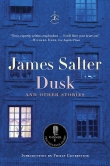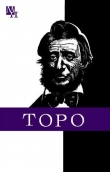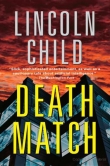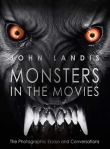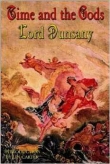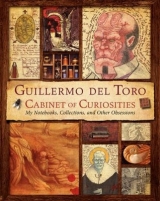
Текст книги "Cabinet of Curiosities: My Notebooks, Collections, and Other Obsessions"
Автор книги: Guillermo del Toro
Соавторы: Marc Scott Zicree
Жанры:
Публицистика
,сообщить о нарушении
Текущая страница: 16 (всего у книги 17 страниц)
UNFINISHED PROJECTS

NOTEBOOK 3, PAGES 28A and 28B

BLUE NOTEBOOK, PAGE 14
* To… go OUTSIDE, WAIT IN WOULD… BE SUICIDE. Exactly…
* Who is X… Why do you need to know? Bring us something for him… Ah, l am… BANG.
* Cell phones cause cancer.
* Massacre at the drive-in.
* Gynecologist who has no nose (an accident at work).
* Who’s on first with foam rubber shit.
* Constant fire and smoke in the wind.
* Suicide on a conveyor belt.
* One of the child prisoners: Let me out, I won’t say anything.
* A little girl wanders alone in a daze…
* Ernie does “weightlifting” with a hunk of meat.
* Ernie hides.
MEAT MARKET

BLUE NOTEBOOK, PAGE 1
* The gynecologist alone with the lids of Campbell’s soup (or sardine) cans.
* Cricket or soccer game with “goals” made of flesh.
* Cthulu “bottled” in a glass jar and “fed” by columns in the RUINS.
* The “birth of Venus” with the shell and all but also with monsters and Bactrian camels.
HOC MOMENTUM ETIAM TRANSIBIT.
•• Originally made at 12:44 on 3/3/93.
* Fixed. Baby Ernie M/M (according to IMCINE)
DAY of NON-RIEL and NON-CRONOS commercial
Bertha spoke with Nacho Durán. Discouragement.
* Great Expectations. MAGWITCH: a convict, Miss Havisham (OF SATIS HOUSE), STELLA. PIP whose journey we follow to manhood. The story begins one gray afternoon in a cemetery/ “I will give you a reason to fight” to start a fight.
•• New version 2/5/95 How different!!

Notebook 3, Pages 28A and 28B.
Ernie in the Drainpipe.
** I move and realize that… X
* Ernie causes his enemy to slip.
A drowned man.
2nd version of. First image June 6, 1992 already Enriquito has already left and there was no Sinc.but I started editing.
 GDT:Meat Market is a story that is really close to my heart. At one point, it was called Meat Market: A Love Story. It was supposed to be like Phantom of the Opera set in a huge meat processing plant. The super-commercial pitch is: “Hamlet in a meat market, by way of Phantom of the Opera.”
GDT:Meat Market is a story that is really close to my heart. At one point, it was called Meat Market: A Love Story. It was supposed to be like Phantom of the Opera set in a huge meat processing plant. The super-commercial pitch is: “Hamlet in a meat market, by way of Phantom of the Opera.”
Ernie, our star and son of a meat-processing mogul, falls in love with Ofelia. And Ernie’s uncle has killed his father to get the meat processing plant. But Ernie has been blamed for the murder and goes and hides in the sewers full of chunks of rotting meat. Eventually, he comes back to rescue Ofelia.
And I was going to have Ron Perlman play Ernie. So I tried to write it for him. And the idea was that Ernie was this baby who had been dropped and had his face broken on the concrete. They had to put him together the best they could, and he became sort of a mixture of the Phantom of the Opera and the Frankenstein monster. If I had Ron at age thirty-five, I would endeavor to find the money to actually make it.
MEPHISTO’S BRIDGE
 GDT:Mephisto’s Bridge was based on a novel called Spanky by Christopher Fowler. It was a Faustian tale about a guy who makes a deal with a devil, but the devil doesn’t want his soul, he wants his body. He says, “You have no soul, but I can use your body to live for another hundred years.”
GDT:Mephisto’s Bridge was based on a novel called Spanky by Christopher Fowler. It was a Faustian tale about a guy who makes a deal with a devil, but the devil doesn’t want his soul, he wants his body. He says, “You have no soul, but I can use your body to live for another hundred years.”
The main character is this guy who thought he deserved everything but did nothing to get it, expecting that because he is a good guy, he should get the girl, the money, the car, the apartment. So this demon comes in and offers to help him get all that, and then he gets it and it’s unsatisfactory because he didn’t earn it. And the demon knows this, and he says, “You didn’t want the car; you wanted the respect. You didn’t want the girl; you wanted the love. You didn’t want the apartment; you wanted the reward for your efforts.”
Spanky, the demon, was this slender, almost beautiful creature that was kind of made of moving pieces when he was out of his host. It’s one of my favorite designs I’ve ever made. I wanted him to be very ornate. Right here [opposite], pre-anything, are the roots of the Faun, and the Hellboy creatures, and Hellboy himself. This is where it all comes from, this basic form.
When Spanky is in his host, a transformation occurs. For that design, we started archangels, which are represented with a mouth on each feather, or with an eye on each feather. And the idea was that each of the demon’s feathers would have an eye that represented a soul he had taken. So he was a walking epic. He was literally a lot of people together.
Mephisto’s Bridge is one of my favorite things I’ve ever written and has some of my favorite designs, too.

BLUE NOTEBOOK, PAGE 161
* Spanky with wings (?) Based on Odilon Redon.
The wings against the light, blocking the sun with “Flare”
* Someone scratches or breaks the glass in a window that they’re going to open when they remember that it’s the 9th floor!!!
* Reinforce or change the Billboard Fight A III
* Wings with layered colors or uniformly steel black, “blued” like a gun.
* Rusty pendulum clocks hanging from a sheet on the roof
Step over a cross at the b.o/ritual.
Could be of Shadow/Light.

BLUE NOTEBOOK, PAGE 173
* Lottie goes to St. Lazarus, a feather falls out, the beating of enormous wings is heard.
* White, milky eyes zombified… “Harryhausenly” Everyone looks at the same place.
* The apparition of Joey with computer “ripple” like intensely colored little flames and like the halo of a fire virgin.
* Joey with CGI crash marks.
* Mollusk. “Spanish Shawl” (NUDIBRANCH)

BLUE NOTEBOOK, PAGE 113
* Voice-activated light dimmer in his APT
* “I’ll race you little Faust…”
* Spanky has tentacle-like “legs” that “open up” into two parts.
* IF/STOP but for a MONITOR with a magazine dummy.
* Sometimes we trick people this way or the other but sometimes… truth is the tool to use, as simple as that”
* You’re a couple of years 2 late.
* Whole new ball game pal.
* Y’re like me, You are… X.
* Spanky: “Jus’ Call me a therapist”
* “Martyn, I haven’t been all bad 2 U have I?”
The texture of Spanky’s skin is “in motion.”
SQUISH!!
THE LIST OF SEVEN

BLUE NOTEBOOK, PAGE 109
* Fear: the wretched thing… it’ll die soon…
* One of the A.R.C. from “List”
* No one else’s Fingerprints at the crime scene.
* The cops in the hospital/family life or “Gimme a break pal I have X’
* The guy is thrown from the tenth story, he crashes, they scream at him “It was a mistake, go hack upstairs, but please… use the service stairs”
* Credit card SPANKY ZZIP-PFFT SPUT!!
* “You are not just an observer MARTYN”
* Bolas ZZUCK! tumble, fire (Burning Man)
* They hired a TOY MAKER for A.R.C.
* We open the tape with the Doyle-like professor on which he speaks to us of his vision and shows us a model of a human eye. They have jute beneath the porcelain.
* Take note, Sparks: “IS this Masonic? “Cause I’m a Catholic.”
* Sparks tries not to speak about his brother…
* Martyn calls or observes Lottie on CHRISTMAS DAY or he sees her with a ♥
* Hanging from the Billboard S.
 GDT:The List of Seven was based on the novel by Mark Frost. He also wrote the screenplay and produced a draft that I really like. It’s a fantastic steampunk adventure.
GDT:The List of Seven was based on the novel by Mark Frost. He also wrote the screenplay and produced a draft that I really like. It’s a fantastic steampunk adventure.
The story is about Arthur Conan Doyle before he writes his first Sherlock Holmes story. He gets tangled up with an occult society in Victorian London that is planning to assassinate Queen Victoria and substitute an automaton for Prince Eddy. The society is building sort of a doomsday machine in a castle in the north of the United Kingdom. And I wanted to create these Caspar David Friedrich-type ruins and Piranesian spaces.
Mark is a very good writer of characters, so Conan Doyle was a really great personality in the screenplay. I love Conan Doyle and know his biography well, so I wanted to include details like the fact that he was an ophthalmologist. And the idea was that he succeeds in the movie only when he includes Holmes as a character, which is based on a secret agent for Queen Victoria named Jack Sparks, who is like a James Bond in Victorian times with all the accoutrements and the gadgets.
Guy Ritchie’s Sherlock Holmes had a lot of the energy, which is similar to what I wanted to do with the Holmes character in The List of Seven. What I kept saying to Universal was that we didn’t need to shoot Holmes boringly. We needed to shoot him to suit the adventure. We are so used to having a passive intellectual—a guy who lives a monastic life. But for me, Holmes is a guy who is pensive and immobile for long periods—like, literally, he could stay in the same pose on a sofa for days, not even eating—but then, when he says, “Come with me, old chap,” he comes alive and it is an adventure.

BLUE NOTEBOOK, PAGE 123
* SIDE VIEW List of 7 “Doomsday Machine”
* “You are going to regret this…” He leaves
* “After all that I’ve done for you, you refuse me a simple favor” Spanky in the library.
* The owner of the house/ severed head in a package: “I won’t allow anyone to bring that “thing” near me. It’s in the cupboard.”
* “Holmes” examines the cord, the newspapers, and the paper that’s wrapped around the package with the head in it.
THE LEFT HAND OF DARKNESS

BLUE NOTEBOOK, PAGE 93
* When he sees her from the roof he cries because “she’s too beautiful”
* A motorcycle built to be driven in the drainage pipes at the M/M.
* “Scouting in the trash dumpsters for pieces.
* Dad receives a letter “Mom’s dead” from there, downhill.
* Hard to know where the hand begins…
 GDT:The Left Hand of Darkness was an adaptation of The Count of Monte Cristo I did with Kit Carson. We started in ’94, and it took us about two years to write the screenplay. And then when my dad was kidnapped in ’97, I rewrote it. And all the anger I had about the kidnapping went into the Monte Cristo character. There’s a great deal of personal grief in it, and I think it’s the best screenplay I’ve ever written.
GDT:The Left Hand of Darkness was an adaptation of The Count of Monte Cristo I did with Kit Carson. We started in ’94, and it took us about two years to write the screenplay. And then when my dad was kidnapped in ’97, I rewrote it. And all the anger I had about the kidnapping went into the Monte Cristo character. There’s a great deal of personal grief in it, and I think it’s the best screenplay I’ve ever written.
The Left Hand of Darkness is a story about vengeance, which I’m fascinated by because it is an empty act. There’s this old saying, “When you seek revenge, dig two graves—one for your enemy, and one for yourself.” I think revenge, when you enact it, ultimately leaves you empty. It makes you feel dirty afterward. And that was the choice we faced after the kidnapping. And we chose not to enact revenge.
But I thought an interesting way to personify vengeance would be to give the Count a mechanical hand that is not good for anything but killing. And he would say, “It’s hard to know where the hand begins and the gun ends.” They fuse. And the mechanical hand was solid gold and had a glass window in it so you could see the gears. This hand turned into the best part of Kroenen in Hellboy. There’s a natural evolution.
And when the Count gets the mechanical hand, he becomes the fastest gunslinger in the West, because I had set it in Mexico, so the film became kind of a steampunk, Gothic Western. But there’s a moment where the Count goes too far and becomes a monster. I wanted the audience to feel sickened at that moment by the fact that they’d been rooting for this guy for an hour and a half.

NOTEBOOK, PAGE 3B
Ty’s first drawing.
First drawing in new type of notebook
“The hand of God” for Montecristo
Nineteenth Century.
Drawing: Guillermo del Toro
Original Design: TyRuben Ellingson
The move to Austin was a bitch for everyone involved.
14 aug
No doubt the need to fill all available space is Freudian and very serious
Good luck in the meeting with GH in TT—O
16
17 “ 1
Possibly painful and lethal
Date to fill
Who knows why I’m obsessed with the void.
Notes for the glove
This drawing presents new empty spaces.
Thirty-three and with debts. Leave your fears in this [?]
Bullshit to fill up space
But it gives rhythm to the image
Apparatus that the count will use
More bullshit to fill up space
Guillermo del Toro 7/18/98 Austin
AT THE MOUNTAINS OF MADNESS
 GDT: I’ve been trying to do At the Mountains of Madness for almost twenty years. Right after Cronos, I wrote a version of it set during the time of conquest of the New World with a bunch of conquistadors arriving at the Mayan ruins and finding another city beneath. It’s never been far away for me. In terms of imagination and the creation of worlds, it’s one of the most compelling projects. But I also think it’s a very commercial horror film.
GDT: I’ve been trying to do At the Mountains of Madness for almost twenty years. Right after Cronos, I wrote a version of it set during the time of conquest of the New World with a bunch of conquistadors arriving at the Mayan ruins and finding another city beneath. It’s never been far away for me. In terms of imagination and the creation of worlds, it’s one of the most compelling projects. But I also think it’s a very commercial horror film.
In the notebooks, I’m really thinking about Mountains more than drawing it. The funny thing is, Lovecraft excelled at being ambiguous about the way his creatures look. The creatures that he’s very specific about, once you draw them, are kind of clunky. When you’re drawing the flying cucumbers that are the Old Ones in Mountains, you have to go, “How are we going to make this work?” But the less Lovecraft describes, the more beautiful the creature. And I think the ambiguity provides the opportunity to make them shape-shifters.
What is funny, though, is that this sketch of a character in Mountains with tentacles over his mouth predates Davy Jones in Pirates of the Caribbean by about two years. When I saw Pirates, I was like, “OK, I’m screwed.”

BLUE NOTEBOOK, PAGE 49
E* Fetuses in jars of marmalade.
* A day hasn’t gone by in which I haven’t thought about death.
* National Geographic’s EXPLORER.
G* Hey, what about X? (grave news about someone). Well, it depends.
T* DRAGGED UNDER BY A SUBTERRANEAN RIVER.
G* Someone does something “very special” and/or receives it at once and then (saves it with, throws it among, sticks it amid, or places it among) a pile of objects or things just like it.
T* As he goes down the “subterranean river,” the explorer sees the female octopus and the ceiling littered with clusters of bones.

BLUE NOTEBOOK, PAGE 7B
–Between anguish and hope, pain is the exit.
–Check out the locations for VOOI for the M.M.
–The SCARLET city in the middle of the white one.
–Green water / Scarlet and corroded walls
–Dietist: The key is to avoid eating large portions. Woman: Ah—yes that makes sense, D: Tomatoes, lettuce, celery, non-fat dairy products… W: Well-that-that’s good. But what about lunch? D: Well at lunch you can give yourself a treat. W: Sure. D: Or you’ll go crazy. W: A treat! That’s a good idea, thank you. D: You are welcome. CUT A: The woman pigging out.
–A mass hallucination. Suggestion or mass hysteria.
–An empty shell that is a ghost.
–Normally ghosts bring the living warnings or premonitions.
–The husband takes a photograph of it.
–One of the researchers is a nun.
–A ghost is visible at the edge of the photo and a phenomenon occurs that she is the only one to see.
–Record it in small NAGRA recorders to give the images depth to give a catalog to the U.
–The husband thinks that they’re radio waves or waves from a nearby CB and pleads with them to use their common sense.
–She asks for proof and it tells her: “Anna, I’m dead, tell me why?”
–An Arkham sailor
–Perhaps Pabodie, like Holly, knows how to build automatons
AFTERWORD
AT THE MOUNTAINS OF MAGNIFICENCE
TOM CRUISE
I WOULDN’T SAY AT THE MOUNTAINS OF MADNESS didn’t work out—I have worked on and postponed many films before they were finally made—it’s just going to work out when it’s supposed to.
While it was painful to watch Guillermo go through the experience of having to put on hold a project that was so close to his heart, I knew he would move on to extraordinary things, and he soon did with Pacific Rim. As I told him at the time, it’s not over, it’s just on pause for now. I’m still determined to work with him, and one day it will happen.

A drawing of one of H. P. Lovecraft’s Elder Things from del Toro’s Blue Notebook, Page 151.
Over the years I’ve been fortunate to work with a lot of truly great filmmakers, and each and every one of them has their own unique tone and voice, which emanates from every frame of their films. This is particularly true of Guillermo’s work. When you look at his movies, you know instantly that you’re seeing a del Toro film, whether it’s Pan’s Labyrinth or Hellboy. His films are very much an extension of who he is and his ideas. It’s in the design, it’s in the lighting, it’s in the composition. It’s in every single creative decision. That’s what makes him an artist. It’s not analytical. It is instinctual; it permeates his work, his life. He has a vivid imagination that remains free against all odds.

Guillermo is a true artist, but he’s also a hard worker. He’s not someone who just talks the talk—he’s actively going out and making things happen, constantly striving to be better at communicating with an audience. He’s discovering what it is that interests people. He’s smart about it, and I think that’s why he’s accumulated a very faithful audience.
He’s very interested in people and hungry for life, he has no sense of self-importance or arrogance. You can always tell someone who’s very competent, because they have an ease in talking about their craft and themselves; there’s no defensiveness or overbearing confidence.

Lovecraftian symbols from Notebook 3, Page 30A.
I’ve admired Guillermo’s work since Cronos, and when we finally had an opportunity to sit down and talk, we started discussing the films we could make together. At that point he was going to direct The Hobbit, but we talked about At the Mountains of Madness and another film based on a British television series called The Champions. Really the whole conversation was about movies, cinema, stories, and comic books—all the things that we both love.
Then I went to Bleak House, which is just sensational. Guillermo surrounds himself with things that inspire him and provoke him and he’s interested in so many different aspects of cinema, literature, art, and storytelling. He’s one of the most fascinating people to sit down with, and his imagination is Absolutely extraordinary. When the conversation came back to At the Mountains of Madness, I said, “Great, I’m in.” I knew the story, and the concept artwork he had created for the movie was stunning and unique.

A series of Cthulhu-like profiles from Notebook 3, Page 30A.
While this project that we were both so passionate about didn’t work out the first time round, I know that it’s going to happen one day—why? Because Guillermo will never stop creating, or caring, no matter what. He will keep at it against all odds. And when it finally happens, it will be infused with all the things that make a Guillermo del Toro movie so distinct and unforgettable: images, emotions, vistas, and characters no one else creates.
Guillermo will permeate every frame of the movie in the same way that he can be found in every room of Bleak House, in every illustration of his journals, and on every page of this book. It’s a beautiful thing to witness, and I look forward to being a part of his exceptionally imaginative world.
ACKNOWLEDGMENTS

Guillermo and Lorenza del Toro (center, always together) surrounded by family and friends at the start of the shoot for a 16mm animated short film.
This book represents only a fraction of the notes in my diaries and the items in my collection at Bleak House, but it offers a great start to a dialogue with those who appreciate the work that I do. We took hours of interview tapes and spent many days archiving, photographing, editing, and designing the pages you now have in your hands. It is only proper that we thank some of the people that made this book possible.
To start, thank you to all the friends and creative confidants who contributed pieces to this book: James Cameron, Tom Cruise, Alfonso Cuarón, Cornelia Funke, Neil Gaiman, John Landis, Mike Mignola, Ron Perlman, and Adam Savage.
Without the collaboration of these artists, my films and this book would not be nearly as rich: Mike Mignola, Wayne Barlowe, Oscar Chichoni, Guy Davis, TyRuben Ellingson, Carlos Giménez, Carlos Jimenez, Rob McCallum, Raúl Monge, Sergio Sandoval, Keith Thompson, Francisco Ruiz Velasco, Raúl Villares, Tanja Wahlbeck, Simeon Wilkins, and Doug Williams. The presence of their work here, of course, does not supersede the rich partnerships I’ve forged with many other artists, whom I value equally as much.
At Insight Editions, I am indebted to publisher Raoul Goff, without whom this book would still be an idea. And thank you to Marc Scott Zicree, with whom I share many affinities. Behind the scenes, editor Jake Gerli and the rest of the book team—art director Chrissy Kwasnik, designer Jon Glick, translator Mike Engle, and editorial staff Chris Prince, Rachel Anderson, and Elaine Ou—did a wonderful job molding my predilections into this fine presentation.
Thank you, too, to my representatives Richard Abate, George Hayum, and Gary Ungar, for standing by me and guiding me through this book development process.
Without these kindred spirits in the world of filmmaking, there would be much less of a story to tell about the notebooks and my films: Pedro and Agustín Almodóvar, Belén Atienza, Álvaro Augustín, Arthur H. Gorson, Elena Manrique, Bertha Navarro, Bernard Nussbaumer, Alejandro Springall, Telecinco, Paolo Vasile, and Jorge Vergara.
Thank you all,


